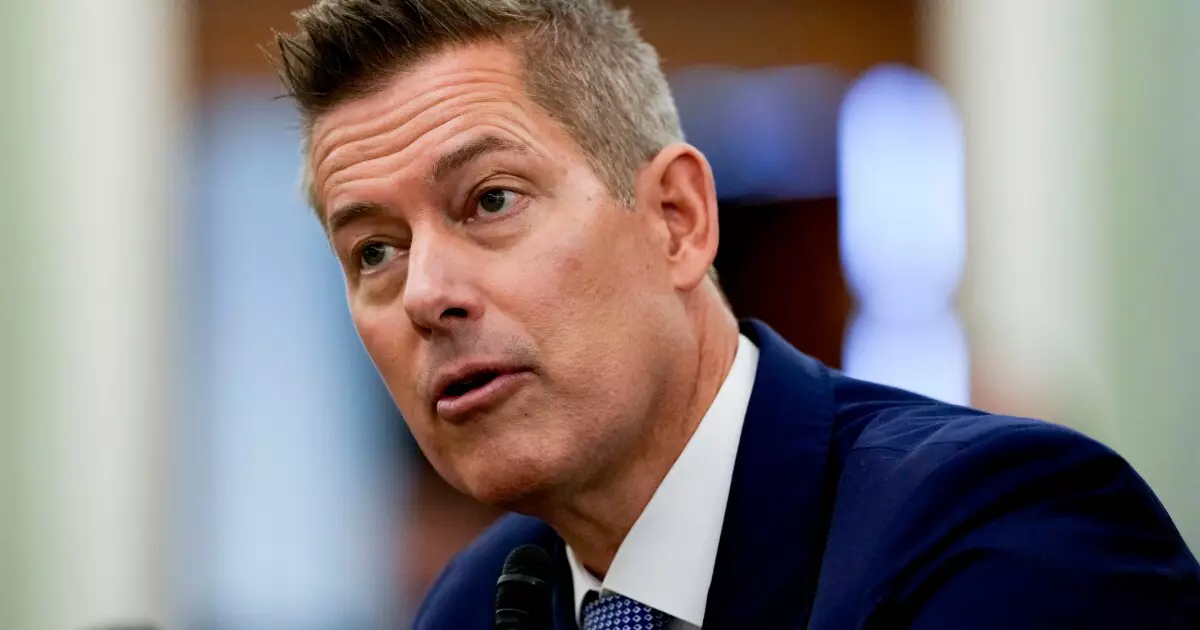As the political landscape continues to shift, recent announcements from the U.S. Department of Transportation (DOT) mark a significant pivot in how infrastructure projects will be funded in the United States. The new direction, championed by Secretary Sean P. Duffy, heralds a departure from the past administration’s stringent environmental and social qualifiers for federal funding. Instead, it embraces a more straightforward, formula-based funding approach that promises to restore reliability in the construction sector. This transition is imperative not just for maintaining infrastructure but for stimulating economic vitality as we emerge from the pandemic’s economic fallout.
The commitment to a formula funding model, which is predominantly state-administered, allows states and localities to decide how to best allocate resources for their infrastructure needs. The nebulous requirements tied to greenhouse gas emissions and equity initiatives have often complicated funding applications and delayed much-needed projects. As Duffy pointed out, the focus will now return to enhancing critical infrastructure that facilitates the movement of people and goods, aligning with the longstanding tenets of federal-aid highway programs established over a century ago.
Reclaiming Local Control
It’s essential to emphasize the importance of local control in transportation policy. Historically, states have proven adept at managing their infrastructure needs when given the autonomy and resources. The previous administration’s approach left many local agencies scrambling under an avalanche of federal mandates that did little other than stymie progress and innovation.
Lawmakers and transportation industry stakeholders now appear unified in the call to strip away complex conditional grants, advocating instead for steadfast funding generated through traditional fuel taxes. These taxes haven’t seen a significant increase since 1993—a reality that underscores the urgent need for policy reform. Without immediate and decisive action, the Highway Trust Fund risks plummeting into insolvency, which would further exacerbate the already precarious state of American infrastructure.
A Focus on Results, Not Rhetoric
The inclination toward a results-oriented approach sets this shift apart from previous strategies that prioritized ideological compliance over tangible outcomes. House Transportation and Infrastructure Committee Chair Sam Graves articulates a pressing need to redirect funding from an array of experimental projects back to priorities such as roads and bridges. Such a strategy focuses on enhancing everyday transportation conveniences rather than vanity projects that don’t reflect the urgent realities facing many Americans.
Additionally, the growing prevalence of electric vehicles poses a unique challenge, as they contribute little to fuel tax revenues. This is an issue that must be addressed pragmatically. The DOT’s renewed emphasis on accountability and scrutiny of agencies like the FAA signals a commitment to not just discuss issues, but to find workable solutions.
Confronting Political Overreach
The overreach exhibited by the previous administration’s policies was more than an inconvenience; it was a larger indictment of the federal government imposing radical agendas that did not resonate with the average American. By resetting the policy landscape, Secretary Duffy indicates that these days of federal overreach are drawing to a close. He has made it clear that accountability will not be an afterthought. There is an urgent need to address not just funding but the culture within federal agencies that can sometimes prioritize social agendas over safety and efficiency.
Duffy’s announcement of a full investigation into DEI hiring practices at the FAA is just the beginning. If true, these allegations might compound the agency’s operational shortcomings, jeopardizing public safety and service effectiveness. Swift accountability is critical if the DOT aims to maintain public trust while managing what is already a tumultuous transportation landscape.
The Road Ahead: Balancing Investment and Accountability
Moving forward, the bureaucracy must remain focused on how best to develop and maintain essential infrastructure. The $118 billion infusion into the Highway Trust Fund underscores the gravity of the situation and the necessity of thoughtful re-authorization of surface transportation legislation as it approaches its sunset in 2026. Redefining how we fund and prioritize infrastructure projects will be crucial for both economic recovery and national progress.
The urgency for these changes cannot be overstated, nor can we underestimate the long-term ripple effects that successful policy implementation will have on American lives. From safety concerns on the highways to the efficiency of our transportation networks, this pivot back to basics holds the potential for a renewed economic renaissance if executed with precision and integrity. The stakes have never been higher, and the time to act is now.

